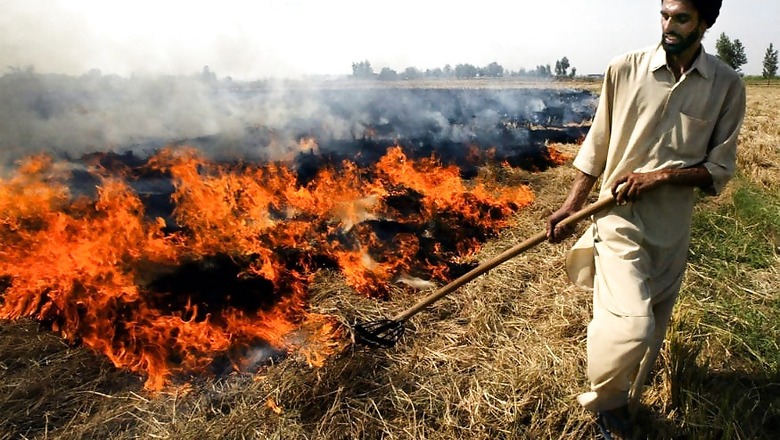
views
"Why do Delhi people blame us for the pollution in their city? Don’t they have local sources of pollution? The problem is Dilliwalas don’t want to give up their cars and factories,” grumbles Manjeet Singh, a farmer from Wazidpur village in Patiala. He is speaking about the crop fires in Punjab and Haryana, which have been held as the primary cause of Delhi’s worsening air pollution.
The farmer’s ‘rant’ has more than a modicum of truth. Government air quality data and meteorological scientists confirm that Delhi’s air quality is very poor, even without the full impact of crop burning in the neighbouring states.
“Crop burning contributes at most 30% to Delhi’s air pollution,” Mahesh Palawat, Chief Meteorologist at Skymet, a private weather forecasting firm, told News18. “The major polluting sources are local in nature: vehicular fumes, construction dust, factory smoke and the fumes from landfill waste.”
Data from SAFAR (System of Air Quality and Weather Forecasting and Research), a government air quality index, indicates that Delhi’s air quality is already ‘very poor’, without the full impact of crop burning.
Crop fires have started in Haryana as the paddy crop has been harvested, though they have not picked up in intensity. In Punjab, the crop is still being cut and the fires will start in earnest after October 25. Some reports suggest that incidents of crop fires may be down by as much as 40% this year due to an NGT order banning the practice and pollution control board officials seeking to fine farmers.
Earlier this year, the Union Environment Ministry unveiled a ‘Graded Response Action Plan’ to tackle air pollution in Delhi and the National Capital Region. The plan outlines steps to be taken when the concentration of pollutants breaches permissible limits, as it does in the winters.
When PM 2.5 (particulate matter) levels breach 100 micro grams per metre cube, sweeping and water-sprinkling of roads has been mandated. The current level in Delhi is 124, forecast to rise to 135 in the next 3 days. PM 10 is even worse at 220.
Other steps include ensuring the smooth flow of traffic. However, construction activity on expanding the Delhi Metro and the sheer volume of cars ensures that traffic snarls are the norm. Even the odd-even scheme, deemed important to curb pollution, faced a massive backlash.
Stopping landfill fires was another step suggested. However, Delhi’s mountains of waste continue to self-combust. A fire broke out over the weekend at the Ghazipur landfill while at the Bhalaswa site in north Delhi, fires contributed to a haze over North West Delhi.
The only measure that seems to have been implemented is the ban on the sale of firecrackers in NCR. Memories of the pea-soup haze last year after Diwali are still fresh in the minds of Delhi residents and the courts have taken cognizance of the contribution of crackers to air pollution.




















Comments
0 comment